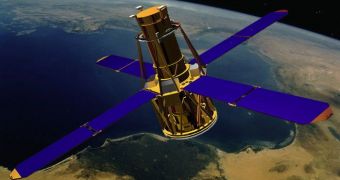Officials with the American space agency are proud to announce that one of their workhorse solar observatories is now celebrating its tenth anniversary in Earth's orbit. The spacecraft also holds the record for the most X-ray solar flares observed on the Sun.
The probe reached its tenth anniversary on February 5, but NASA is continuously celebrating the achievement. It launched to space on February 5, 2002, and has managed to successfully complete all of its mission objectives since then.
Its primary mission was to analyze how holds flares are able to accelerate particles from the Sun or from around the star to speeds nearing that of light. The probe was also involved in studying how solar flares and coronal mass ejections release so much explosive energy during very brief intervals.
Since launch, the Reuven Ramaty High Energy Solar Spectroscopic Imager (RHESSI) has managed to study more than 40,000 solar flares in X-ray wavelengths. It also holds a nod for being the first solar observatory to image solar gamma rays from a solar flare.
It is also the first satellite ever to measure the terrestrial gamma-ray flashes that zip through the upper atmosphere whenever a lightning flashes. The phenomena were discovered relatively recently, and only a handful of spacecraft or other scientific tools have the ability to image what's going on.
The spacecraft also allowed scientists to change the way they understand concepts such as solar eruptions, coronal mass ejections, solar flares and so on. "Except, thanks in part to RHESSI, we don't even separate the biggest explosions into categories like that anymore,” Brian Dennis explains.
“RHESSI has taught us that 'Thou shalt instead say Solar Eruptive Events.' Now we know that one burst of energy in the sun’s atmosphere creates both kinds of eruptions,” adds the expert, who is a RHESSI mission scientist at the NASA Goddard Space Flight Center, in Greenbelt, Maryland.
“Part of the energy shoots into the sky and becomes a CME (coronal mass ejection). Part of the material is driven down to the sun’s surface and appears as the flare. RHESSI's 10 years of observations have helped fill in the holes in this picture,” the GSFC expert adds, quoted by Space.
Though old, the spacecraft has entered its latest mission extension in 2009, and it is showing no signs of fatigue. Most likely, it will continue to observe the Sun for years to come. This is especially useful now, when the Sun is getting ready to reach another maximum in its 11-year cycle.

 14 DAY TRIAL //
14 DAY TRIAL //